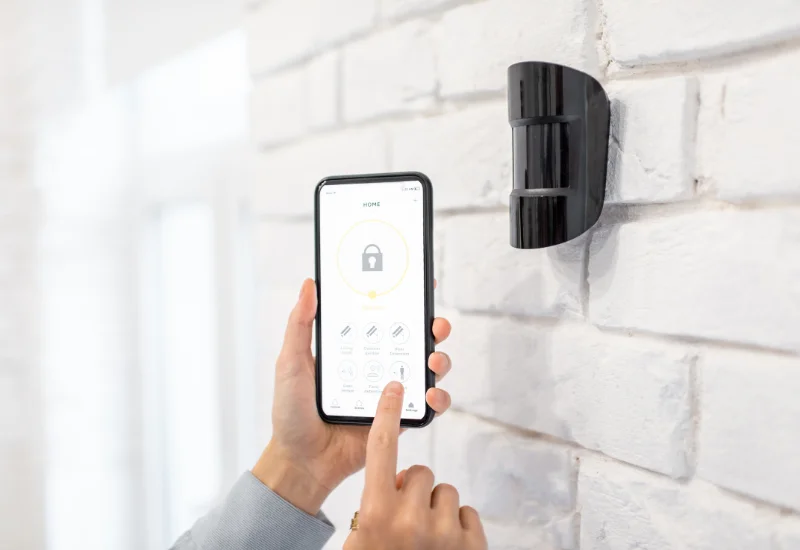
Dec 04, 2025
Written by Jill - Written: October 23, 2023

In today’s world, workplace safety and security are of utmost importance. A key aspect of maintaining a secure workplace is having an effective workplace visitor policy. In this blog post, we will discuss the top 9 visitor policy best practices to help ensure your company remains safe and secure.
This article will provide you with all the information you need to know about:
So keep reading to gain valuable insights about creating and implementing a robust visitor policy that protects your employees, assets, and reputation.
A visitor policy is a set of guidelines and procedures that dictate how visitors are managed within a workplace. The main purpose of a visitor policy is to ensure the safety and security of employees and company assets, while also maintaining a welcoming environment for guests.
A visitor policy outlines the expectations for visitors, such as who is authorized to enter and what they can and cannot do while on the premises. It also includes guidelines about verifying the identity and purpose of visitors, and monitoring their movements throughout the facility.
A well-designed visitor policy strikes a balance between maintaining a high level of security and fostering a positive experience for guests. Inadequate visitor management can lead to various risks, such as theft, data breaches, vandalism, and even violence. On the other hand, overly restrictive policies may create a negative perception of the company and hinder collaboration with external partners. As such, it is essential to develop a visitor policy tailored to the unique needs and challenges of your organization.
An effective workplace visitor policy should include the following components:
Purpose and scope
The policy should clearly define its purpose and scope, including the types of visitors allowed in the workplace and the areas they are permitted to access.
Identification and access The policy should establish procedures for verifying the identity of visitors, such as requiring identification or pre-registration, and granting access to the premises.
Security and safety The policy should outline the measures in place to ensure the safety and security of both employees and visitors, such as security screenings, restrictions on bringing in certain items, and protocols for emergency situations.
Conduct and behavior The policy should set expectations for visitors’ conduct and behavior, including guidelines for appropriate behavior, language, and dress, and consequences for violating these guidelines.
Privacy and confidentiality The policy should address how the workplace will handle visitors’ personal information and confidential information they may encounter while on the premises. This may include the use of visitor NDAs.
Liability and insurance The policy should clarify the workplace’s liability and insurance coverage for visitors, including any waivers or agreements that visitors may be required to sign.
Enforcement The policy should outline the consequences for violating the policy and who is responsible for enforcing it.
Communication and Training The policy should be communicated to all employees and visitors, and training should be provided on the policy’s requirements and procedures.
When creating your workplace visitor policy, consider consulting with security experts and reviewing examples of workplace security policies. Some factors to consider when creating a visitor policy include the type of industry, the sensitivity of information or assets being protected, the level of visitor traffic, and any legal or regulatory requirements that may apply to your organization.
It is also essential to regularly update and revise your policy to adapt to evolving security threats and organizational changes. By keeping these steps in mind, your company can create a safer, more secure, and welcoming environment for both employees and visitors.

Ensure your workplace visitor policy outlines clear guidelines about who has authority to approve visitors, such as department heads, supervisors, or designated security personnel. This helps maintain a clear chain of responsibility and accountability when it comes to granting access to your facility.
Consider the following when defining your visitor approval process:
Decide on who gets to go where in your facility, and implement robust access control measures to restrict visitor access to specific areas. These measures help prevent unauthorized access, reduce the risk of theft or data breaches, and maintain compliance with industry regulations. Here are some ways to effectively control visitor access to your premises:
Visitors should never be wandering about by themselves through your premises. By having them accompanied by an authorized employee at all times, you ensure they do not inadvertently gain access to sensitive areas or information.
An effective visitor escort policy includes assigning specific employees to act as escorts for visitors based on their role, department, or expertise. These employees should be trained in escort responsibilities and have a thorough understanding of your company’s visitor policy and access control procedures.
You should also establish a system for escorts to communicate with security personnel or reception staff in case of any issues or emergencies that may arise during a visitor’s stay.
Conducting comprehensive visitor screening and identification is crucial for maintaining workplace safety and ensuring that only authorized individuals gain access to your premises. Implementing a thorough screening process allows your organization to identify potential security risks, protect sensitive information, and comply with industry regulations.
Some key elements to include in your visitor screening and identification process are: background checks, visitor NDAs, verification of visitor identification, visitor registration, and security screenings.
A visitor management system (VMS) is an integrated software solution that helps organizations manage and track visitors entering their premises. It replaces traditional, paper-based visitor logs with a digital system that automates the registration process, maintains a record of visitor information, and facilitates the enforcement of access control policies.
Not only does this streamline the visitor registration process and provide valuable insights into visitor trends, implementing a VMS can also significantly improve workplace safety and security:
If you want to experience the benefits of a modern visitor management system for your business, take advantage of Vizito’s 14-day trial today.
Visitor badges should display essential information, such as the visitor’s name, company, and clearance level. This helps employees easily identify visitors and ensure they have the appropriate authorization.
Visitor badges play a vital role in maintaining workplace security by providing employees with an easy way to identify visitors and ensure they have the appropriate authorization. When designing visitor badges, it is important to include essential information that helps facilitate a secure environment. Essential elements to include are the visitor’s name, company, clearance level, date and time of arrival, duration of their visit, and a photograph. You can also include a QR code that can be scanned by security personnel or integrated with your access control system.
Most visitor management systems allow you to easily take a photograph of your visitor and efficiently create and issue a visitor badge that contains all the necessary information.

To ensure visitors are aware of the expectations and requirements, it is essential to clearly display your visitor policies and procedures in prominent locations within your facility. Providing easy access to this information helps guests understand their responsibilities and adhere to your organization’s security protocols.
An effective way to display your visitor policies and procedures, is by placing clear signage or informational displays in your reception area, where visitors are likely to see them upon arrival. This can include posters, digital screens, or printed handouts that outline the key aspects of your visitor policy.
You can also incorporate your visitor policies and procedures into the check-in process on your self-service kiosk or tablet, and print a summary or generate a QR code that links to the full policy on the visitor badges.
Publishing your visitor policies and procedures on your company website allows visitors to review the information before arriving at your facility, which helps ensure compliance with your security protocols.
Establishing emergency response plans and protocols is essential for ensuring the safety of both employees and visitors in your workplace. Your visitor policy should include provisions for visitor safety during emergencies:
A visitor management system can be an invaluable tool in managing and coordinating these situations effectively. By incorporating emergency response plans and protocols into your VMS, you can ensure that your organization is prepared to handle emergencies effectively.
To maintain a secure workplace, it is essential to regularly train and educate employees on visitor policy compliance. Employees play a critical role in upholding your organization’s security protocols and ensuring the safety of everyone on your premises. By emphasizing the importance of following security procedures and reporting any suspicious behavior, you can create a culture of safety and awareness within your organization.
Different industries and organizations face unique challenges when it comes to visitor management. To create an effective visitor policy, it is crucial to consider your organization’s specific needs and risks. For example, a healthcare facility may focus on preventing infections, while a food company may focus on maintaining hygiene and safety standards.
Consider factors such as:
By assessing these factors and learning from examples of how different organizations have adapted their visitor policies, you can create a customized visitor policy that effectively addresses your unique needs and challenges.
In conclusion, implementing an effective workplace visitor policy is essential for maintaining safety and security in your organization. By following our top 9 visitor policy best practices, utilizing technology like digital visitor management systems, and adapting your policy to your organization’s unique needs and challenges, you can help ensure a secure and welcoming environment for both employees and visitors.
For more tips on improving your workplace security, explore our articles on improving safety with a VMS, safety in food companies, GDPR, workplace security tips, and visitor NDAs.
To get a feel of how a modern visitor management system can help your business, try out Vizito during a 14-day trial. Chat with us or book a demo to discuss how Vizito can help you improve your reception.